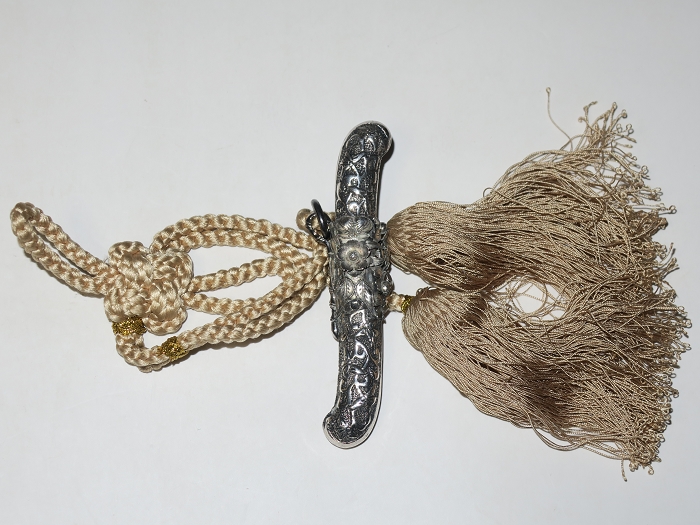 Approximately 10cm including sheath, approximately 6.5cm sheath, blade length approximately 5.5cm, width approximately 1cm, weight approximately 77.2g including string, original cloth well preserved, with box. An exhibit at the Vienna World Exposition in Meiji 6. Good condition, beautiful.
Approximately 10cm including sheath, approximately 6.5cm sheath, blade length approximately 5.5cm, width approximately 1cm, weight approximately 77.2g including string, original cloth well preserved, with box. An exhibit at the Vienna World Exposition in Meiji 6. Good condition, beautiful.
An unprecedented Japanese sword-style paper knife won a bid at an art club in Paris. Although it is light in weight, the whole scabbard is inlaid with high-quality pure silver with flower-and-grass patterns.
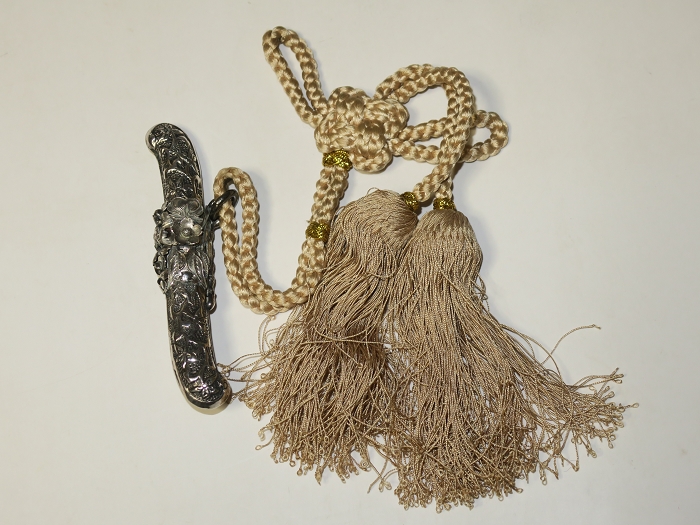
A paper knife is a knife-like tool usually used for opening letters or document bags. Although it is called a knife, it is rare to find one with a sharp blade, and this work can be regarded as a miniature real Japanese sword with a sharp edge and willow leaf-shaped blade. A masterpiece unique to Japanese metalworkers, and the pride of the Japanese people.
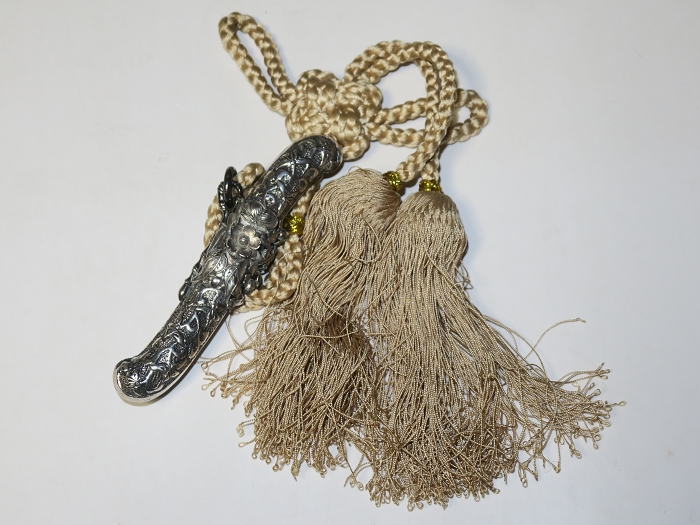
Maki-e (蒔絵, literally: sprinkled picture (or design)) is a Japanese lacquer decoration technique in which pictures, patterns, and letters are drawn with lacquer on the surface of lacquerware, and then metal powder such as gold or silver is sprinkled and fixed on the surface of the lacquerware. The origin of the term maki-e is a compound word of maki meaning “sprinkling” and e meaning “picture” or “design”. The term can also be used to refer to lacquerware made with this decorative technique. The term maki-e first appeared in the Heian period.
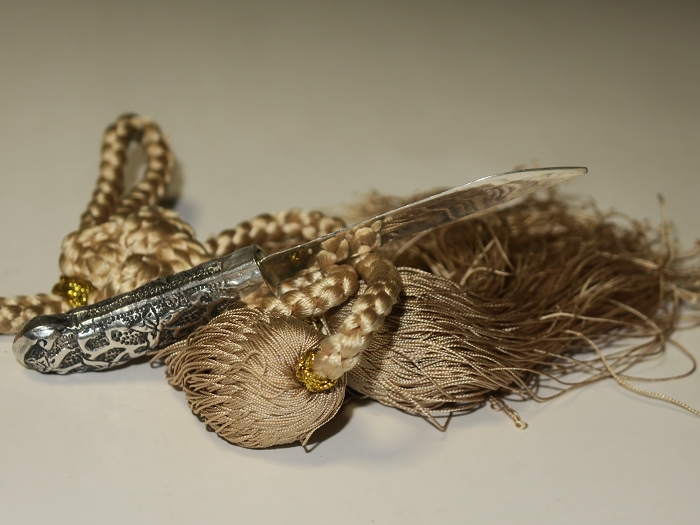
This technique is the most used technique in Japanese lacquer decoration. The maki-e is often combined with other techniques such as raden (螺鈿) in which a nacreous layer of mollusk shell lining is embedded or pasted in lacquer, zōgan (象嵌) in which metal or ivory is embedded in lacquer, and chinkin (沈金) in which gold leaf or gold powder is embedded in a hollow where lacquer has been shaved.
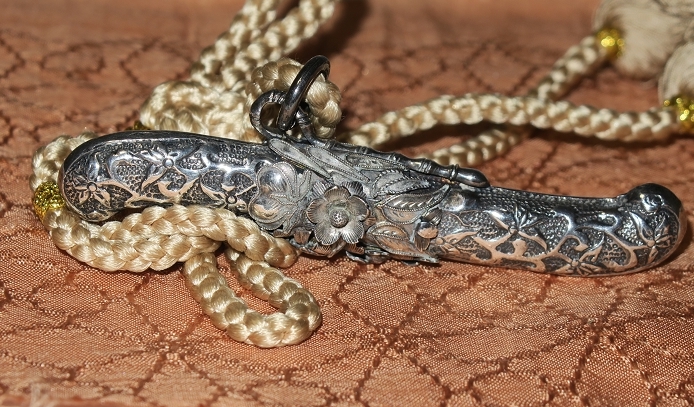
To create different colours and textures, maki-e artists use a variety of metal powders including gold, silver, copper, brass, lead, aluminum, platinum, and pewter, as well as their alloys. Bamboo tubes and soft brushes of various sizes are used for laying powders and drawing fine lines. As it requires highly skilled craftsmanship to produce a maki-e painting, young artists usually go through many years of training to develop the skills and to ultimately become maki-e masters.
Click the picture below to get more